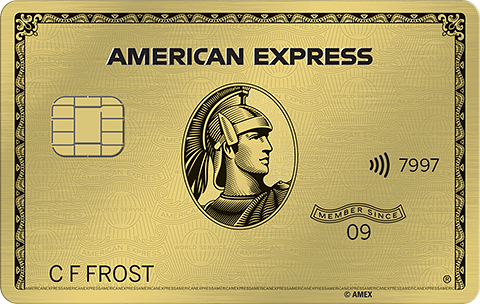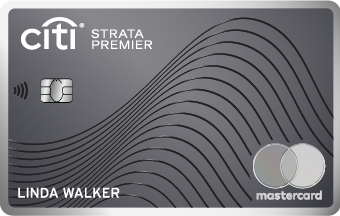- myFICO® Forums
- FICO Scoring and Other Credit Topics
- Understanding FICO® Scoring
- Where, and by whom, is the FICO 10T trended data s...
- Subscribe to RSS Feed
- Mark Topic as New
- Mark Topic as Read
- Float this Topic for Current User
- Bookmark
- Subscribe
- Mute
- Printer Friendly Page
Where, and by whom, is the FICO 10T trended data stored?
Is your credit card giving you the perks you want?
Browse credit cards from a variety of issuers to see if there's a better card for you.
- Mark as New
- Bookmark
- Subscribe
- Mute
- Subscribe to RSS Feed
- Permalink
- Report Inappropriate Content
Where, and by whom, is the FICO 10T trended data stored?
I'm curious about this. As we know, FICO 10 and earlier use "snapshots in time" where the score is generated in a couple of miliseconds "from whole cloth" whenever the FICO scoring algorithm is applied to a credit report. Correct me if I'm wrong about that.
But to use trended data, previous iterations of credit reports will have to be stored on a server somewhere, I imagine, so the 10T algorithm can rifle through 2+ years of those reports to generate its trended score. Are these stored by the CRAs? I doubt FICO wants to be responsible for warehousing all that data.
The other option is that prior scores are stored somewhere and then figured into the most recent snapshot score to generate the trended score. However, this is untenable because suppose there has been a change to the past report, such as a fraudulent account from last year being successfully removed by the consumer. The 10T score would have to be generated completely anew each time, but from years of stored data.
SO the questions are 1) who is in charge of all this prior data 2) how many versions of previous CRs will be stored? That is to say, is a snapshot of the CR taken every single time there's a change to the report, and then stored, and then used every time a trended score is generated? Or will the saved snapshot be taken monthly... weekly...? and 3) is this data subject to federal laws and state laws (such as CCPA, CPRA) that mandate consumers have access to it?
Or am I getting this all wrong? Is there another way an algorithm can use trended data without actually saving all that data somewhere?
- Mark as New
- Bookmark
- Subscribe
- Mute
- Subscribe to RSS Feed
- Permalink
- Report Inappropriate Content
Re: Where, and by whom, is the FICO 10T trended data stored?
You're getting it wrong. Account information for the prior 84 months is already part of your credit report. 10T just scores prior month utilization values in addition to current month, where other FICOs only score current values. The CRAs store and maintain your credit reports, and it's those same reports that are scored for both 10T and, e.g., FICO8.









- Mark as New
- Bookmark
- Subscribe
- Mute
- Subscribe to RSS Feed
- Permalink
- Report Inappropriate Content
Re: Where, and by whom, is the FICO 10T trended data stored?
Yes and no. The CRAs store the historical data which is pulled, analyzed and scored by Fico 10T and VS4. My understanding is prior month utilizations are not scored directly. It is the trend over time that is scored in addition to current data being scored.
Question: which would score higher with 10T today?
1) a profile that had an aggregate utilization of 50% 12 months ago that was paid down monthly to 5% today.
2) a profile that was at 3% utilization 12 months ago, bounces between 2% and 8% monthly and happens to be at 5% today.
Fico 8: .......EQ 850 TU 850 EX 850
Fico 4 .....:. EQ 809 TU 823 EX 830 EX Fico 98: 842
Fico 8 BC:. EQ 892 TU 900 EX 900
Fico 8 AU:. EQ 887 TU 897 EX 899
Fico 4 BC:. EQ 826 TU 858, EX Fico 98 BC: 870
Fico 4 AU:. EQ 831 TU 872, EX Fico 98 AU: 861
VS 3.0:...... EQ 835 TU 835 EX 835
CBIS: ........EQ LN Auto 940 EQ LN Home 870 TU Auto 902 TU Home 950
- Mark as New
- Bookmark
- Subscribe
- Mute
- Subscribe to RSS Feed
- Permalink
- Report Inappropriate Content
Re: Where, and by whom, is the FICO 10T trended data stored?
@Slabenstein wrote:You're getting it wrong. Account information for the prior 84 months is already part of your credit report.
All of it?
10T just scores prior month utilization values in addition to current month, where other FICOs only score current values. The CRAs store and maintain your credit reports, and it's those same reports that are scored for both 10T and, e.g., FICO8.
Ok, so where are these prior month utilization values in my current CR? I can see a payment history, lates, etc. But I'm not seeing the actual payments for all those months.
- Mark as New
- Bookmark
- Subscribe
- Mute
- Subscribe to RSS Feed
- Permalink
- Report Inappropriate Content
Re: Where, and by whom, is the FICO 10T trended data stored?
@Thomas_Thumb wrote:Yes and no. The CRAs store the historical data which is pulled, analyzed and scored by Fico 10T and VS4. My understanding is prior month utilizations are not scored directly. It is the trend over time that is scored in addition to current data being scored.
Are you saying the entirety of all (or at least 7 years of) historical data changes to a credit report are stored in the current credit report? If so, how can we see all this information? The only historical values I can see on mine are a calendarized list of whether a payment was made on time, whether it wasn't, or "no data." I don't get years of payment amounts or credit limit changes. I'd like to see that information.
- Mark as New
- Bookmark
- Subscribe
- Mute
- Subscribe to RSS Feed
- Permalink
- Report Inappropriate Content
Re: Where, and by whom, is the FICO 10T trended data stored?
Reports show monthly statement balances, so the balances can be trended individually and in aggregate by the algorithm. However, monthly CLs are not listed so historical utilizations are not available. It would appear trending would need to focus on absolute $ for balances.
Btw - I believe 10T only looks at the most recent 2 years of data.
Fico 8: .......EQ 850 TU 850 EX 850
Fico 4 .....:. EQ 809 TU 823 EX 830 EX Fico 98: 842
Fico 8 BC:. EQ 892 TU 900 EX 900
Fico 8 AU:. EQ 887 TU 897 EX 899
Fico 4 BC:. EQ 826 TU 858, EX Fico 98 BC: 870
Fico 4 AU:. EQ 831 TU 872, EX Fico 98 AU: 861
VS 3.0:...... EQ 835 TU 835 EX 835
CBIS: ........EQ LN Auto 940 EQ LN Home 870 TU Auto 902 TU Home 950
- Mark as New
- Bookmark
- Subscribe
- Mute
- Subscribe to RSS Feed
- Permalink
- Report Inappropriate Content
Re: Where, and by whom, is the FICO 10T trended data stored?
if it's not on your credit report, it's not used in a 10T score
10T is just a score that considers "payment and debt history for the previous 24 months" whereas previously utilization had no memory and payment amounts were irrelevant for the score
it's just implmenting logic that creditors have already been using and adding elements of that to the actual score itself
Maxed out
Maxed out
Maxed out
Maxed out
Maxed out
Maxed out
Maxed out
Maxed out
0% utilization
is "sus", and a 10T score now reflects that
whereas all other older scores would not punish somebody for that previously poor credit behavior



Current FICO 8:






























- Mark as New
- Bookmark
- Subscribe
- Mute
- Subscribe to RSS Feed
- Permalink
- Report Inappropriate Content
Re: Where, and by whom, is the FICO 10T trended data stored?
@GZG wrote:if it's not on your credit report, it's not used in a 10T score
10T is just a score that considers "payment and debt history for the previous 24 months" whereas previously utilization had no memory
So you're saying that prior versions of FICO don't take into account payment history?
- Mark as New
- Bookmark
- Subscribe
- Mute
- Subscribe to RSS Feed
- Permalink
- Report Inappropriate Content
Re: Where, and by whom, is the FICO 10T trended data stored?
Unfortunately the new trended models still suck - perhaps even worse than the old. Why? Because they utterly fail to determine whether or not the profile is practicing transactor behavior vs revolver behavior and punish more for high balance reporting. If I PIF it should not matter if balances are paid early vs on time. Either way the same amount is charged and paid off every month.
Transactors present the least risk as shown by paying balances in full every month without fail. Balance reports on statement, pay statement balance - simple.
The credit card companies want you to prepay charges on their card prior to statement cut date. Saves them money - no float. The Fico credit scoring algorithms have been tailored to reward early pay behavior as well. However, the algorithms are contradictory and flawed.
The Fico algorithms penalize you if all cards report $0 balance. Why? because no recent revolving activity is viewed as increased risk (that's ok). However, the algorithms mistakenly use $0 balance as equating to no activity. Many accounts having monthly activity report a $0 balance.
A different Fico scoring factor looks at # of accounts with balances. The fewer the better with zero card accounts having balances being optimal. Do you see the contradiction?
The flaws in these algorithms: inability to use valid methods to assess activity and reluctance to establish a transactor classification are a disappointment. I had hoped the latest algorithms would address these shortcomings.
Unfortunately they don't so transactors who just PIF statement balance and those who prepay all card balances to $0 continue to be penalized.
Fico 8: .......EQ 850 TU 850 EX 850
Fico 4 .....:. EQ 809 TU 823 EX 830 EX Fico 98: 842
Fico 8 BC:. EQ 892 TU 900 EX 900
Fico 8 AU:. EQ 887 TU 897 EX 899
Fico 4 BC:. EQ 826 TU 858, EX Fico 98 BC: 870
Fico 4 AU:. EQ 831 TU 872, EX Fico 98 AU: 861
VS 3.0:...... EQ 835 TU 835 EX 835
CBIS: ........EQ LN Auto 940 EQ LN Home 870 TU Auto 902 TU Home 950
- Mark as New
- Bookmark
- Subscribe
- Mute
- Subscribe to RSS Feed
- Permalink
- Report Inappropriate Content
Re: Where, and by whom, is the FICO 10T trended data stored?
@GZG wrote:if it's not on your credit report, it's not used in a 10T score
10T is just a score that considers "payment and debt history for the previous 24 months" whereas previously utilization had no memory and payment amounts were irrelevant for the score
it's just implmenting logic that creditors have already been using and adding elements of that to the actual score itself
Maxed out
Maxed out
Maxed out
Maxed out
Maxed out
Maxed out
Maxed out
Maxed out
0% utilization
is "sus", and a 10T score now reflects that
whereas all other older scores would not punish somebody for that previously poor credit behavior
@@GZG
How is utilization determined if credit limits are not stored monthly? If the algorithm uses the only credit limit stored (most recent) prior month calculations would be inaccurate if there were CLIs or CLDs.
The last report I pulled was 5 years ago so perhaps CLs are now listed/stored monthly on reports
Fico 8: .......EQ 850 TU 850 EX 850
Fico 4 .....:. EQ 809 TU 823 EX 830 EX Fico 98: 842
Fico 8 BC:. EQ 892 TU 900 EX 900
Fico 8 AU:. EQ 887 TU 897 EX 899
Fico 4 BC:. EQ 826 TU 858, EX Fico 98 BC: 870
Fico 4 AU:. EQ 831 TU 872, EX Fico 98 AU: 861
VS 3.0:...... EQ 835 TU 835 EX 835
CBIS: ........EQ LN Auto 940 EQ LN Home 870 TU Auto 902 TU Home 950